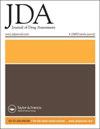Understanding purchasing patterns and product access of newly launched specialty generics
IF 2.4
引用次数: 0
Abstract
Abstract Background: Many specialty drugs have lost patent exclusivity and more specialty generics (SGs) are expected in the future. Payers continue to look for ways to manage health care costs in the specialty pharmacy space and SG products offer the opportunity for savings. Given increasing interest in SGs, manufacturers are expected to invest more than $100 billion in the development of SGs over the next five years. To remain competitive, pharmacies must have access to SG products and access to competitive pricing for SGs, which can be obtained by accessing pharmaceutical manufacturer agreements through MHA Specialty Pharmacy Solutions. Aims: Understand purchase patterns of newly launched SGs and see if increased access to product was facilitated by the entrance of a SG. Methods: To determine purchase patterns of newly launched SGs, the rate of change of both the brand and generic products were measured for five specialty drugs across MHA pharmacy members. When possible, the brand rate was measured by the units of brand product purchased the quarter prior to the generic launch compared to the number of units in first quarter 2019 (1Q19). The generic product rate was measured by the units of generic product in the quarter it launched compared to units in 1Q19. To detect changes in product access to SGs, the number of corporations dispensing the brand was measured in the quarter prior to the generic launch compared with the number of corporations dispensing the generic in 1Q19. Results: Brand imatinib (Gleevec1) number of units decreased 80% while generic imatinib units grew by 134%. The number of corporations dispensing generic imatinib increased 34%. Brand hydroxyprogesterone caproate (OHPC) (Makena2) number of units decreased 67% while generic OHPC units grew by 641%. The number of corporations dispensing generic OHPC increased 38%. Brand abiraterone acetate (Zytiga3) number of units decreased 63% while generic abiraterone units grew by 289%. The number of corporations dispensing generic abiraterone increased 60%. Brand tetrabenazine (Xenazine4) and brand dalfampridine ER (Ampyra5) could not be measured due to limited distribution. Generic tetrabenazine units increased 2967% and the number of corporations dispensing increased 2114%. Generic dalfampridine ER units increased 1451% and the number of corporations dispensing increased 463%. Conclusions: Pharmacies purchasing through MHA Specialty Pharmacy Solutions are able to expand their access to products and quickly adopt SGs in order to grow their businesses and serve patients.了解新推出的专业仿制药的购买模式和产品获取途径
摘要背景:许多特效药已经失去了专利排他性,预计未来会有更多的特效仿制药。付款人继续在专业药房寻找管理医疗保健成本的方法,SG产品提供了节约的机会。鉴于对SG的兴趣日益浓厚,预计制造商在未来五年将投资1000多亿美元开发SG。为了保持竞争力,药店必须能够获得SG产品和SG的有竞争力的定价,这可以通过MHA Specialty Pharmacy Solutions获得药品制造商协议来获得。目的:了解新推出的SG的购买模式,并了解SG的加入是否有助于增加对产品的获取。在可能的情况下,品牌率是通过在仿制药推出前一季度购买的品牌产品单位与2019年第一季度(2019年第1季度)的单位数量进行衡量的。非专利产品率是根据其推出的季度非专利产品的单位与2019年第一季度的单位进行衡量的。为了检测SGs产品访问的变化,与2019年第一季度发放仿制药的公司数量相比,在仿制药推出前的一个季度测量了发放该品牌的公司数量。结果:伊马替尼(格列卫1)品牌单位数量减少了80%,而伊马替尼非专利单位增加了134%。发放非专利伊马替尼的公司数量增加了34%。品牌己酸羟丙酯(OHPC)(Makena2)的单位数量减少了67%,而普通OHPC单位增加了641%。发放非专利OHPC的公司数量增加了38%。醋酸阿比特龙品牌(Zytiga3)的单位数量减少了63%,而普通阿比特龙单位增加了289%。发放非专利阿比特龙的公司数量增加了60%。由于分布有限,无法测量品牌的四苯那嗪(Xenazine4)和品牌的达法普利定ER(Ampyra5)。通用四苯并那嗪装置增加了2967%,配药公司数量增加了2114%。通用达法普啶ER单位增加了1451%,配药公司数量增加了463%。结论:通过MHA Specialty Pharmacy Solutions购买的药房能够扩大其产品的获取范围,并快速采用SG,以发展其业务并为患者服务。
本文章由计算机程序翻译,如有差异,请以英文原文为准。
求助全文
约1分钟内获得全文
求助全文

 求助内容:
求助内容: 应助结果提醒方式:
应助结果提醒方式:


